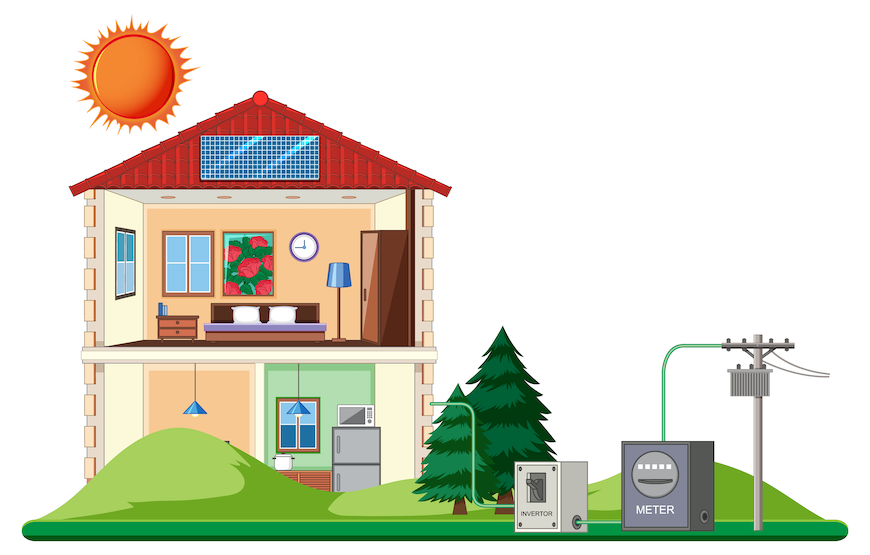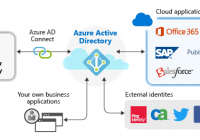The energy sector is currently in the midst of a significant transformation, fuelled by the growing demand for more sustainable and efficient energy management practices. Australia stands out as a global leader, with a remarkable adoption of Distributed Energy Resources (DER), including high rates of residential solar installations and a rising interest in modern solutions such as energy storage and electric vehicles.

At the heart of this energy revolution are the standards and protocols that facilitate seamless communication, interoperability, and control within the dynamic smart grid and DER ecosystems.
What is DER?
DER are a key component of the modern energy landscape. DER refers to a diverse range of small-scale, decentralised power generation and storage devices that are located close to the point of energy consumption. Examples of such resources include solar panels, wind turbines, energy storage systems, and even electric vehicles.
DER systems are designed to produce and store energy in a distributed fashion, often at the local level, including residential or commercial areas. They play a vital role in the transition to a more sustainable and resilient energy infrastructure. DER technologies enable consumers to generate their own electricity, reduce energy costs, and contribute to a more environmentally friendly energy grid.

For further understanding of DER, watch this short but informative video from Australian Renewable Energy Agency.
Common Smart Inverter Profile (CSIP) – Integration Guide
CSIP establishes a common set of communication specifications, ensuring interoperability among diverse devices and systems, including utilities and grid operators. This standard facilitates the seamless integration of DERs into the smart grid ecosystem.
CSIP for Australia
Common Smart Inverter Profile for Australia (CSIP-AUS), was developed by the Distributed Energy Integration Program (DEIP), as a collaboration by the Australian energy sector. It leverages existing standards, namely the IEEE 2030.5-2018 specification (referred to as IEEE 2030.5 for short), and CSIP.
In addition to what is defined in IEEE 2030.5 and CSIP, extensions have been incorporated in CSIP-AUS to meet the distinctive demands of the Australian energy market. As with the original CSIP, its core objective is to facilitate seamless communication between DERs and grid operators, but with a focus on the Australian context.
The introduction of CSIP-AUS is a significant step in aligning DER integration with Australian grid regulations, fostering a more sustainable and resilient energy landscape.
IEEE 2030.5: The Protocol for Smart Grid Communication
IEEE 2030.5, formerly known as the Smart Energy Profile, is an industry protocol that standardise communications between the smart grid and consumer devices. It defines a common framework for connecting a wide range of devices and systems, including utilities, grid operators, and DERs.
The core purpose of IEEE 2030.5 is to enable secure, reliable, and standardised interactions within the smart grid ecosystem to exchange information, including device status, demand response, pricing, and energy usage.
Here are some of the key features of IEEE 2030.5
- Data Models: It defines a structured and standardised way to represent and exchange data relevant to energy management. These data models ensure consistent interpretation between utilities, grid operators, and various DERs.
- Interoperability: The standard promotes interoperability among different types of DERs, such as solar inverters, energy storage systems, electric vehicles, and more. This enables seamless communication and data exchange regardless of the device’s manufacturer.
- Real-time Monitoring: It facilitates real-time, or close to real-time, monitoring and control of energy resources, allowing utilities and grid operators to make informed decisions about energy production, distribution, and consumption.
- Security: IEEE 2030.5 includes robust security measures leveraging industry standards, including PKI and TLS. These features help protect against unauthorised access and maintain the integrity of data exchanged.
- Industry Standards IEEE 2030.5 leverages industry standard technologies like XML, HTTP(S), REST, XSD, CIM, TLS, etc. By leveraging industry standard protocols and technologies, IEEE 2030.5 promotes easier interoperability and implementation.
These core features of IEEE 2030.5 contribute to its pivotal role in shaping a more efficient, secure, and interoperable smart grid while promoting the effective integration of diverse distributed energy resources.
Opportunities
Beyond paving the way for a greener and more sustainable energy landscape, the broad adoption of communication standards such as CSIP and IEEE 2030.5 opens up lucrative opportunities across the board. From device manufacturers and utility & grid operators to integration consultants, as well as hardware and software vendors, the spectrum of stakeholders stands to gain considerably.
For device manufacturers, embracing CSIP means creating smart inverters that can seamlessly integrate into the electrical grid. This not only enhances the marketability of their products but also allows them to cater to a growing demand for energy solutions.
Residential, commercial, and industrial energy consumers benefit from more reliable and cost-effective energy solutions, including options for renewable energy integration. Additionally, a smarter grid opens up opportunities for consumers, such as homeowners with solar panels, to participate in the market and profit from the extra energy they generate.
System integrators, such as LimePoint, can develop and provide software solutions that enable seamless integration and management of DERs and smart grid components. By offering innovative, interoperable software solutions, these vendors can tap into a burgeoning market focused on grid efficiency, renewable energy, and grid management.
As the energy landscape continues to evolve, embracing these standards translates into a competitive advantage and the ability to address the growing demand for clean, efficient, and responsive energy solutions.
Implementation Challenges
Implementing CSIP and IEEE 2030.5 can present several challenges as there are no fully rolled out examples in the world that we can learn from.
- Deployment
The deployment of CSIP and IEEE 2030.5 requires a considerable investment in infrastructure and system upgrades. Existing devices and systems may need to be retrofitted or replaced to ensure compatibility, which can be costly and time-consuming. Additionally, training and technical expertise are necessary to implement and maintain these standards effectively. - Regulation
Regulatory and policy frameworks need to be in place to support the adoption of CSIP and IEEE 2030.5. Governments and regulatory bodies play a crucial role in creating an environment that encourages compliance, incentivises adoption, and addresses any legal or regulatory barriers. - The IEEE 2030.5 Specification
- It is authored generically so that it can be applied in a broader range of scenarios, providing flexibility in meeting unforeseen or future requirements. However, as a natural result of being generic, in certain cases, it appears to be lacking specificness. For example, with CSIP, an aggregator is an entity or service provider that collects and manages various DERs. The aggregator communicates with the utility communication gateway (or DER server) on behalf of the DERs it manages, while these DERs may or may not be IEEE 2030.5 capable. In practice, the aggregator is an important player in the grid operation, but it is not even defined as first class entity or concept in the IEEE 2030.5 data models.
- The specification was designed in 2008 and adopted XML the data exchange format. However, the technology landscape has shifted in favour of other formats, such as JSON. Although XML is still largely supported, it can create nuances while in implementation. It is worth noting that implementing a solution that supports both XML and JSON may result in complexity and cost.
- The specification has quite a strong security requirement. It is even said that in some aspects, its security requirements are higher than PCI, or Payment Card Industry v2. However, the device certificate in IEEE 2030.5 has indefinite lifetime validity, and revocation is a challenge. It is then up to individual implementation to manage blacklists the way they see fit.
Conclusion
IEEE 2030.5, CSIP, and CSIP-AUS collectively drive the transformation of the energy sector. They establish the standards and protocols that enable efficient communication, integration, and control within the smart grid and DER ecosystems. These standards not only enhance grid efficiency and reliability but also play a pivotal role in promoting the adoption of renewable energy resources, such as solar power. As we move toward a more sustainable and interconnected energy landscape, the role of these standards becomes increasingly vital in shaping the future of energy management.

If you’re navigating the complex world of Distributed Energy Resources (DER) and the implementation of standards like CSIP-AUS IEEE 2030.5, LimePoint is your trusted partner. Whether you’re a utility, grid operator, or an energy service provider, LimePoint can help you optimise your energy ecosystem and ensure efficient, sustainable, and reliable operations.
Contact us to elevate your DER projects and smart grid integration.
Resources
- IEEE 2030.5-2018 – IEEE Standard for Smart Energy Profile Application Protocol https://standards.ieee.org/ieee/2030.5/5897/
- IEEE 2030.5 Data Model: https://zepben.github.io/evolve/docs/2030-5/
- CSIP: https://sunspec.org/common-smart-inverter-profile-csip/
- CSIP-AUS: https://arena.gov.au/knowledge-bank/common-smart-inverter-profile-australia/



